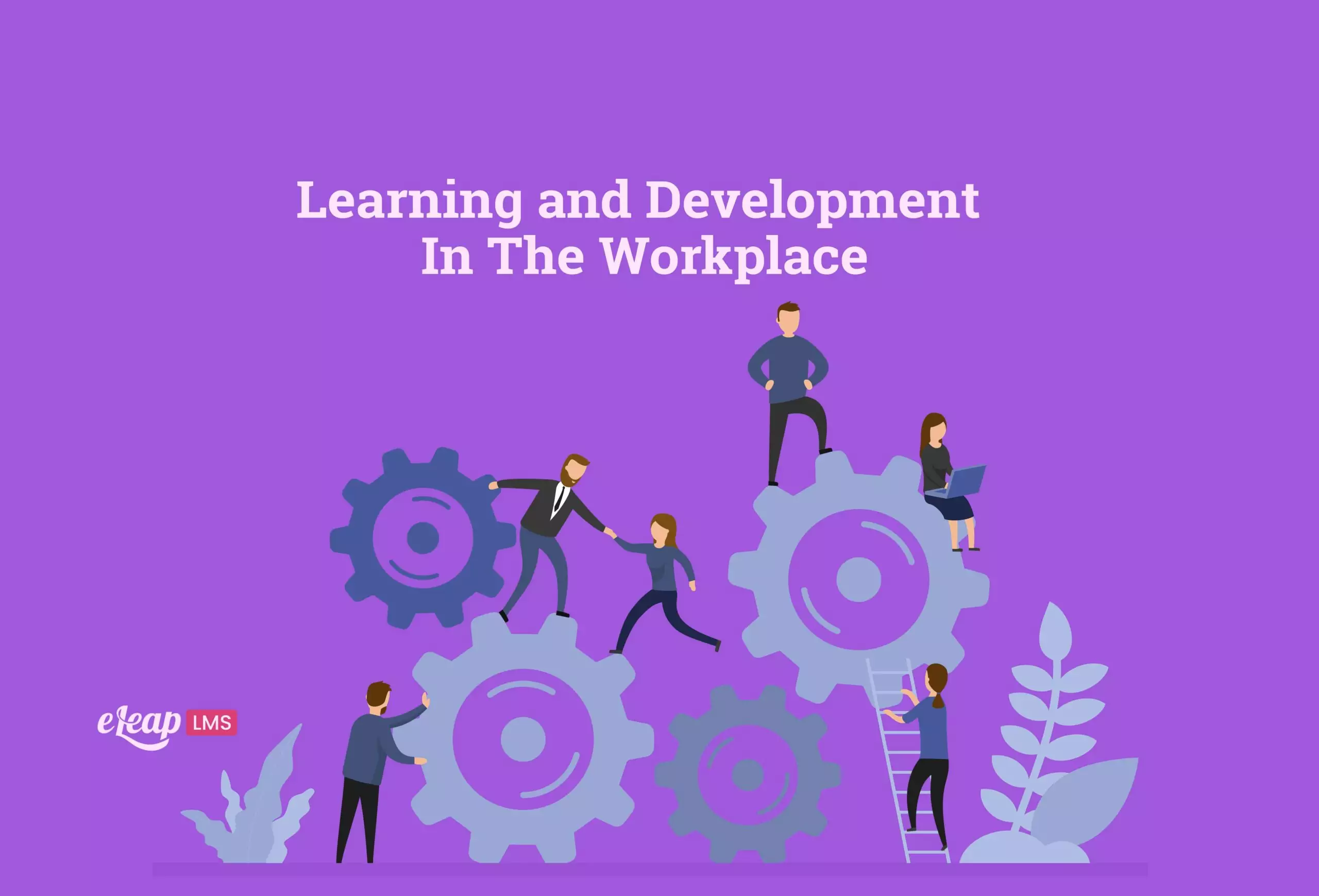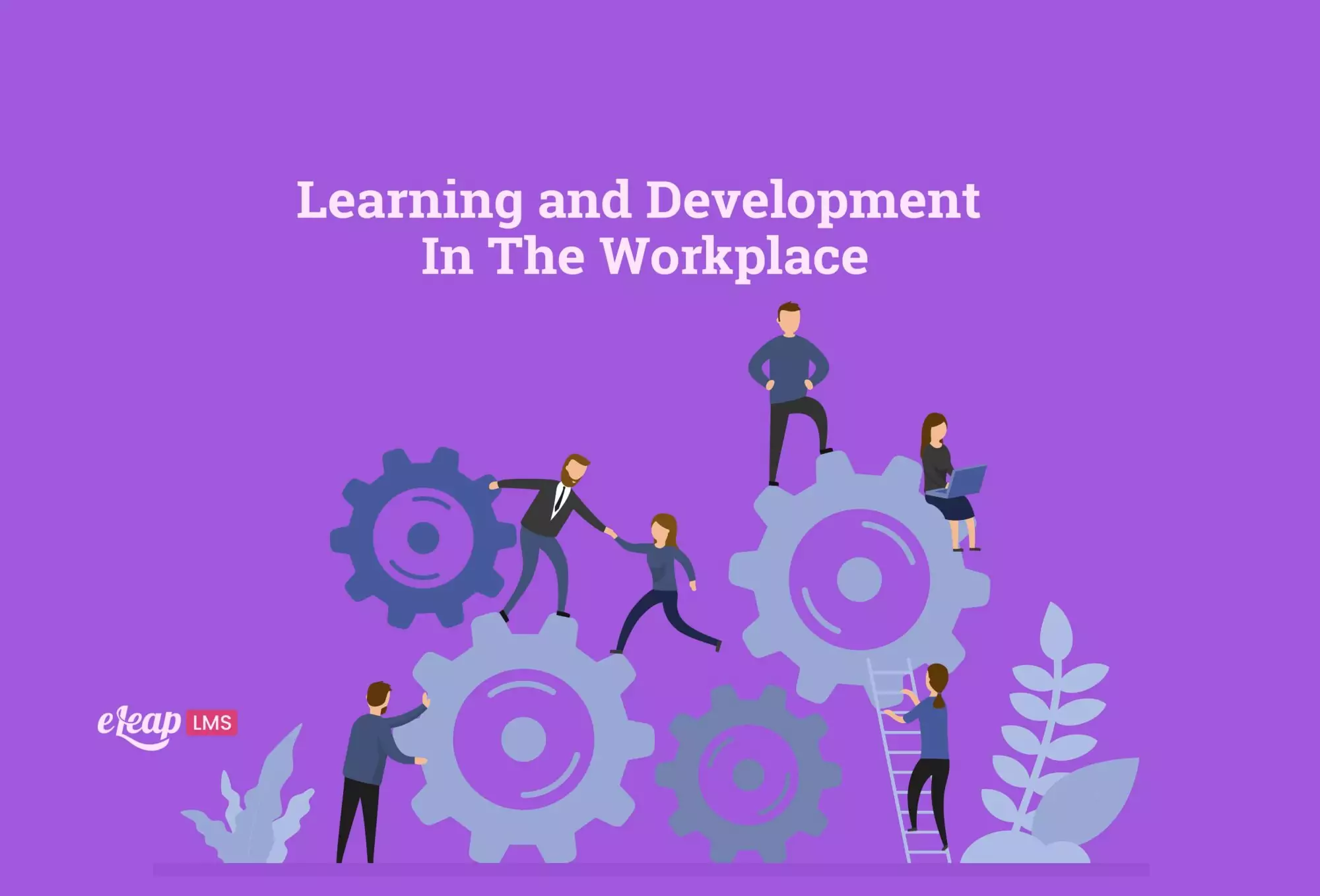Learning and Development In The Workplace

Everything a company does to promote career development amongst staff is called ‘‘Learning and Development.’’ The learning and development category includes training courses, development programs, online learning, development activities, and so much more.
Among the conventional “core” duties of human resources management are learning and development. It’s often handled by the HR manager of a corporation or by the Human resources department. However, the Operations Manager or COO may determine the L&D plan in smaller businesses.
L&D plans vary greatly from one organization to the next because the phrase is wide and encompasses many different things. L&D strategies of large corporations, in particular, frequently diverge from some of those of small and medium-sized enterprises.

Learning and Development in Large Companies
L&D departments tend to be highly structured in large companies. The majority of the time, a comprehensive HRM Department will be responsible for carrying out the L&D plan.
Alternatively, there may even be a defined L&D team composed of expert Learning Officers working full-time to identify training requirements and set up the most appropriate learning experience or development cycle.
Team members will likely have access to considerably more structured learning and development options than they would at smaller businesses. This could entail the availability of online courses or training programs provided by specialized training providers.
Senior management is typically more layered in larger organizations. Several of them will engage in management training designed for top managers and company leaders to acquire new abilities relevant to their leadership roles.
Learning and Development in Small Companies
The L&D strategy is frequently a little more confined by the existing funds in smaller companies. Since those businesses are less inclined to possess a fully functional Human Resources division, the duty may fall to a Director of operations or an individual in a comparable position.
This indicates that there is a lower likelihood that the educational experiences provided to employees will take the type of official training. It’ll be considerably less formal and more relaxed. They aren’t any less valuable because of this. In actuality, many people pick tiny enterprises due to the distinctive L&D options they provide.
Tiny teams and little budgets in small, rapidly expanding organizations frequently force employees to work beyond their comfort zones, be introduced to new skills, and execute their talents quickly.
This is frequently referred to as “social learning”—learning that occurs simply because of interacting with teammates whose abilities and experiences would inevitably influence you. This type of education isn’t formal or institutional; rather, it’s continuous learning— a form of learning you do all the time.
Although it’s a demanding method of working, for certain people, it’s a very alluring proposition because it offers considerably faster career advancement and a wider range of activities than those offered by larger firms.
Small businesses offer learning and development in various ways, not the least of which is through “understanding by doing.” Impactful L&D can be achieved at a small company using various strategies and regulations.
Creating a professional development plan for each team member is a terrific place to start. It’s also important to consider developing strategies for more inexperienced teammates to work alongside more experienced teammates. You can learn a great deal by observing those with more expertise go about their business.
As a substitute, many businesses decide to provide their workers in small teams with dedicated Learning and Development allocations to use whatever they see fit. Providing the employee the authority to spend his\her own money can be pretty effective, cutting away a lot of the fuss even if it may seem like a needless expense.
This means you may give your members of the team ownership over their professional development rather than relying on line supervisors or training officers to identify development requirements.
You can study more about how smaller companies can create a fantastic L&D atmosphere on a shoestring budget if you’re concerned with creating a growth mindset at your company but are concerned about costs.
The main distinction between large and small organizations in this regard is that small firms’ L&D tends to be considerably more self-motivated; workers are more likely to take responsibility for their advancement than simply follow a pre-established roadmap.
The Benefits of Learning and Development
A clever L&D plan can help any sort of firm, but smaller companies might benefit the most from it. Giving your coworkers access to educational possibilities aids in developing new skills which they use daily in their work. A small company’s competitive advantage is its excellent team members. You can use them as a competitive advantage to take on bigger companies.
Additionally, much data now connects a learning culture to high employee engagement. According to a PWC survey, millennials prioritize professional growth over monetary compensation at work. People are more inclined to put in the extra effort and devote themselves to their job if they believe they’re gaining something.
Strong employee involvement provides additional advantages. High staff retention rates are also associated with having fully motivated team members, meaning that your employees will perform better at their jobs and stay with you for longer. In corporate jargon, this is referred to as talent acquisition or talent development, but in essence, it is about ensuring that your best employees remain in the workplace.
Therefore, having a successful L&D plan at your business can aid in motivating your current employees and retaining them for a longer period. Through such a perspective, learning and development may be viewed as much more than just enhancing your staff’s daily skills. Instead, it can be seen as an advantage and one of the main reasons prospective employees connect and stay with your business.
Creating a Learning and Development Strategy
Creating a learning and development strategy is essential for any organization. It not only helps to ensure that employees have the skills and knowledge needed to do their jobs effectively, but it also helps to ensure that the organization can develop and succeed long-term.
A good learning and development strategy involves identifying current and future needs and setting goals to meet them. It also involves setting up systems to track progress and measure success.
With the right strategy in place, organizations can ensure that their employees are constantly learning and growing and that their organizations are adapting and staying competitive in an ever-changing world.
Furthermore, an effective learning and development strategy can help create an engaged and motivated team of eager employees to learn and contribute to the organization’s growth and success. For any organization to be successful, it’s essential to have a solid learning and development strategy in place.
Therefore, having a successful L&D plan at your business can aid in motivating your current employees and retaining them for a longer period. Through such a perspective, learning and development may be viewed as much more than just enhancing your staff’s daily skills; this is a major focus of eLeap’s mandate. With good LMS features and other resources available to you, learning and development will be a breeze.